
Buchenwald was a Nazi concentration camp established on Ettersberg hill near Weimar, Germany, in July 1937. It was one of the first and the largest of the concentration camps within the Altreich territories. Many actual or suspected communists were among the first internees.

Oswald Ludwig Pohl was a German SS functionary during the Nazi era. As the head of the SS Main Economic and Administrative Office and the head administrator of the Nazi concentration camps, he was a key figure in the Final Solution, the genocide of the European Jews. After the war, Pohl went into hiding; he was apprehended in 1946. Pohl stood trial in 1947, was convicted of crimes against humanity, and sentenced to death. After repeatedly appealing his case, he was executed by hanging in 1951.
A kapo was one of prisoner functionaries, a prisoner in a Nazi camp who was assigned by the SS guards to supervise forced labor or carry out administrative tasks.
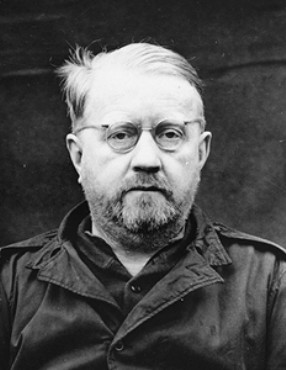
Gerhard August Heinrich Rose was a Nazi German physician and war criminal who performed medical atrocities on concentration camp prisoners at Dachau and Buchenwald without the subjects' consent. He infected Jews, Romani people, and the mentally ill with malaria and typhus. Following the Doctors' Trial, Rose was convicted of war crimes and sentenced to life in prison, but he was released in 1955.

Ernst Wiechert was a German teacher, poet and writer.

Muselmann was a term used amongst prisoners of German Nazi concentration camps during the Holocaust of World War II to refer to those suffering from a combination of starvation and exhaustion, as well as those who were resigned to their impending death. The Muselmann prisoners exhibited severe emaciation and physical weakness, an apathetic listlessness regarding their own fate, and unresponsiveness to their surroundings owing to their barbaric treatment.

Erwin Oskar Ding-Schuler was a German surgeon and an officer in the Waffen-SS who attained the rank of Sturmbannführer (Major). He is notable for having performed experiments on inmates of the Buchenwald concentration camp.
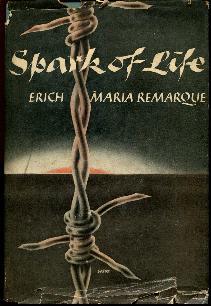
Spark of Life is a concentration camp novel, written by Erich Maria Remarque in the year 1952.
The Politische Abteilung, also called the "concentration camp Gestapo," was one of the five departments of a Nazi concentration camp set up by the Concentration Camps Inspectorate (CCI) to operate the camps. An outpost of both the Gestapo and the criminal police (Kripo), the political department evolved into the most important of the five.
The Sanitätswesen was one of the five divisions of a Nazi concentration or extermination camp organization during the Holocaust. The other divisions were the command center, the administration department, the Politische Abteilung and the protective detention camp.
Aktion Arbeitsscheu Reich was a punitive campaign in Nazi Germany targeting individuals deemed as "work-shy" or "asocial." In April and June 1938, as part of the "Arbeitsscheu Reich"(work-shy Reich), more than 10,000 men were arrested as so-called "black triangle anti-social elements" and sent to concentration camps. During the so-called June-action, about 2,500 Jews who had received previous convictions for varied reasons were also targeted.

Arthur Dietzsch was a German KZ trustee (Funktionshäftling) and Kapo as well as an inmate nurse (KZ-Häftlingspfleger) in Block 46 of KZ Buchenwald.
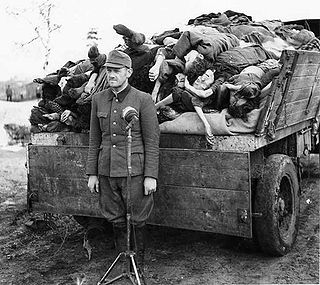
Schutzhaftlagerführer was a paramilitary title of the SS, specific to the concentration and extermination camps Totenkopfverbande. A Schutzhaftlagerführer was in charge of the economic function of the camp. Usually, there was more than one SS man performing that function at each location due to their enormous size. Schutzhaftlagerführers received orders from the central offices in Berlin, such as DEST run directly by the SS. Prisoners' lives were entirely in their hands. Their orders, which usually involved routine maltreatment of condemned victims, were carried out through "assignments" so they would not have to deal with the dead resulting from them.
Jakob Weiseborn was a German SS-Sturmbannführer (major) and the first commandant of Flossenbürg concentration camp.
Albert Sauer was a Nazi German commandant of Mauthausen-Gusen concentration camp. He died of wounds in 1945, and was never tried for his role in The Holocaust.
The commandant was the chief commanding position within the SS service of a Nazi concentration camp. He held the highest rank and was the most important member of the camp unit. The commandant directed the camp headquarters and was responsible for all issues of the nazi concentration camp. The regulations of his duties and responsibilities came from the Concentration Camps Inspectorate (CCI).
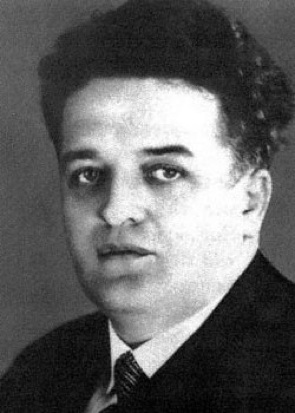
Walter Kraemer (Krämer) was a German politician of the German Communist Party (KPD) and member of the resistance against Nazism. From 1932/33, he was a deputy of the Prussian Landtag, was arrested in 1933 and murdered in 1941 in a sub-camp of the concentration camp Buchenwald in Goslar. He assisted prisoners with getting medical help, becoming known as the "Doctor of Buchenwald", for which he received from the State of Israel the posthumous title "Righteous among the Nations" in 2000.
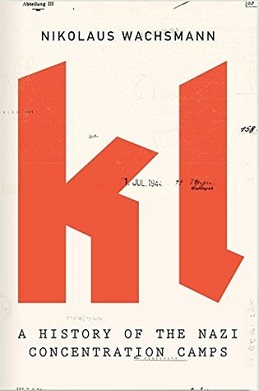
KL: A History of the Nazi Concentration Camps is a 2015 book by Birkbeck College professor Nikolaus Wachsmann.
Marian Ciepielowski was a Polish physician and scientist. A survivor of the Buchenwald concentration camp, he is best known for his activity as a saboteur within the camp's vaccine production unit. Ciepielowski's actions resulted in useful vaccines being distributed to camp inmates, while inactive and useless "vaccines" were sent to Nazi soldiers. After the war he emigrated to the United States.
Erich Wagner was a German-Austrian SS-Sturmbannführer and camp doctor in the Buchenwald concentration camp.

![Original 1946 cover of Kogon's Der SS-Staat [de] (tr. The Theory and Practice of Hell) Der SS-Staat.jpg](http://upload.wikimedia.org/wikipedia/commons/thumb/5/5f/Der_SS-Staat.jpg/220px-Der_SS-Staat.jpg)











